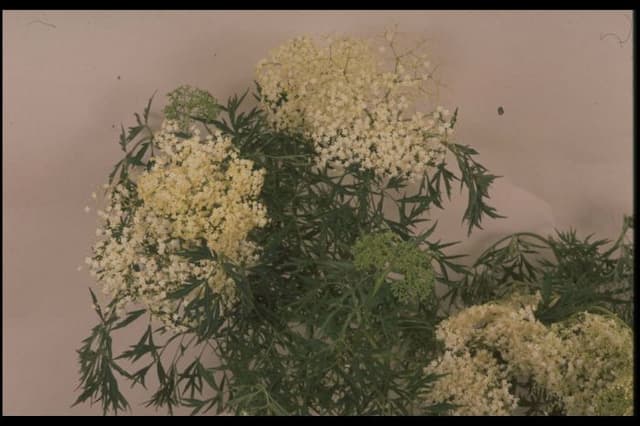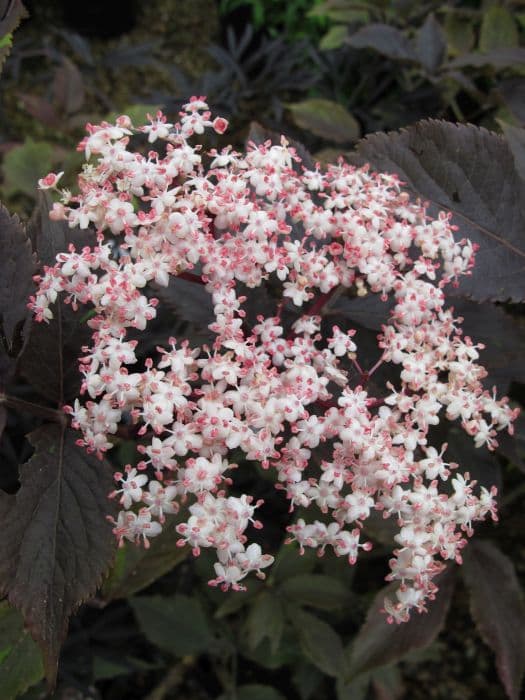Laurustinus 'Gwenllian' Viburnum tinus 'Gwenllian'

ABOUT
'Gwenllian' is a bushy medium-sized evergreen shrub with neat, dark green, ovate leaves and compact clusters of starry white flowers opening in late winter from reddish buds, and followed by ovoid metallic-blue berries
About this plant
 Names
NamesFamily
Adoxaceae
Synonyms
Laurustinus, Laurestine
Common names
Viburnum tinus 'Gwenllian'.
 Characteristics
CharacteristicsLife cycle
Perennials
Foliage type
Evergreen
Color of leaves
Green
Flower color
Pink
Height
6-10 feet (1.8-3 meters)
Spread
6-10 feet (1.8-3 meters)
Plant type
Shrub
Hardiness zones
7-9
Native area
Mediterranean
Benefits
 General Benefits
General Benefits- Ornamental Appeal: Produces attractive, dense evergreen foliage and clusters of pink-budded flowers that blossom into white during the winter and spring.
- Landscape Versatility: Can be used for hedges, screens, or as a specimen plant in diverse landscape designs.
- Drought Tolerance: Once established, it exhibits a degree of drought resistance, making it suitable for gardens with limited water availability.
- Low Maintenance: Requires minimal trimming and can thrive without frequent care, making it a convenient choice for gardeners of all skill levels.
- Pollinator Friendly: Flowers attract bees and butterflies, supporting local ecosystems and benefiting biodiversity.
- Privacy: Due to its dense growth habit, it provides excellent privacy when used as a hedging plant.
- Seasonal Interest: Offers year-round visual interest through its foliage, and seasonal flower and berry display, keeping the garden attractive in all seasons.
- Hardiness: It is a hardy plant that can withstand a variety of climates and is resistant to many pests and diseases.
- Berries for Wildlife: Produces berries that are a source of food for birds, providing essential support for wildlife.
 Medical Properties
Medical Properties- Anti-inflammatory: Some species of Viburnum have been used to treat inflammation, although there is no specific research on Viburnum tinus 'Gwenllian' for this use.
- Antispasmodic: Traditionally, Viburnum species may be used to relieve muscle spasms, but there is no scientific evidence specifically supporting this use for Viburnum tinus 'Gwenllian'.
- Anodyne: Some Viburnum plants are known to have pain-relieving properties, but there is a lack of modern evidence to suggest that Viburnum tinus 'Gwenllian' is effective for this purpose.
 Air-purifying Qualities
Air-purifying QualitiesThis plant is not specifically known for air purifying qualities.
 Other Uses
Other Uses- Laurustinus 'Gwenllian' branches are often used in floral arrangements due to their ornamental qualities and long-lasting nature.
- The dense foliage can provide an effective privacy screen or windbreak in garden designs or as a hedge.
- With its ability to withstand coastal conditions, Laurustinus 'Gwenllian' can be used in seaside gardens to offer greenery resistant to salt sprays.
- The plant can be trained onto a trellis or wall, creating a living tapestry of glossy leaves and seasonal flowers.
- Laurustinus 'Gwenllian' can be used as a backdrop plant in a mixed shrub border, providing a continuous evergreen presence.
- Fruit from the Viburnum tinus can be used to create a natural dye, although this is not a mainstream usage.
- Its dense growth habit can offer shelter and nesting opportunities for birds within a wildlife garden setting.
- The plant's stiff branches can be utilized as natural supports for more fragile plants or as a framework for climbing vines.
- Viburnum tinus 'Gwenllian' can help in soil stabilization on slopes or in areas prone to erosion due to its robust root system.
- In craft traditions, the wood of older Viburnum tinus 'Gwenllian' can be used for small woodcarving projects.
Interesting Facts
 Feng Shui
Feng ShuiThe Laurustinus is not used in Feng Shui practice.
 Zodiac Sign Compitability
Zodiac Sign CompitabilityThe Laurustinus is not used in astrology practice.
 Plant Symbolism
Plant Symbolism- Renewal: Viburnum tinus 'Gwenllian', commonly known as laurustinus, often blossoms during late winter or early spring, symbolizing new beginnings and the renewal of life after the cold winter months.
- Protection: With its dense evergreen foliage, laurustinus can symbolize protection, offering shelter to birds and other wildlife, much as it offers a protective energy in human contexts.
- Endurance: As an evergreen plant, laurustinus represents endurance and perseverance, staying lush and green throughout the year, even in challenging conditions.
- Abundance: Laurustinus flowers and berries appear in abundance on the shrub, symbolizing generosity and plenty.
 Water
WaterWater the Laurustinus thoroughly when the top inch of the soil feels dry to the touch, approximately once a week, but adjust depending on local weather conditions. During the spring and summer growing seasons, it may require watering more frequently. Ensure that the plant receives deep watering, which generally means applying around 1 to 2 gallons of water per event for a mature shrub, depending on the size and environmental conditions, allowing the moisture to reach the root zone. Reduce watering in the fall and further in the winter to prevent waterlogged conditions, as this plant prefers a well-drained soil.
 Light
LightThe Laurustinus thrives in full sun to partial shade. The best spot for the plant would be a location where it receives at least four to six hours of direct sunlight per day, complemented by partial shade during the hotter parts of the day to protect it from intense afternoon sun.
 Temperature
TemperatureThe Laurustinus prefers moderate temperatures and can generally tolerate temperatures between 10°F and 80°F. Ideally, it performs best when the climate stays within the range of 50°F to 70°F. It's important to protect the plant from extreme cold, ensuring it's not exposed to temperatures below 10°F, which could be harmful.
 Pruning
PruningPrune Laurustinus to maintain its shape and encourage bushier growth, typically after the plant has finished blooming in the spring. Remove any dead or damaged branches, and thin out the plant to allow light and air circulation. Pruning is not required annually but can be done every few years or as needed to control size.
 Cleaning
CleaningAs needed
 Soil
SoilThe best soil mix for Laurestine (Viburnum tinus 'Gwenllian') is well-draining, fertile, and humus-rich. A mix of loam, peat or compost, and coarse sand or perlite is ideal. The optimal pH range for Laurestine is slightly acidic to neutral, between 5.5 and 7.5. Adjusting the soil with organic matter can help maintain the pH and soil health.
 Repotting
RepottingLaurestine (Viburnum tinus 'Gwenllian') typically doesn't require frequent repotting as it's often grown as an outdoor shrub. If grown in containers, repot every 2-3 years to refresh the soil and accommodate root growth; early spring before new growth begins is the ideal time.
 Humidity & Misting
Humidity & MistingLaurestine (Viburnum tinus 'Gwenllian') tolerates a range of humidity levels but prefers moderate conditions. Average indoor humidity is usually adequate; avoid extremely dry air by providing some humidity, especially during winter when indoor heating can reduce moisture levels.
 Suitable locations
Suitable locationsIndoor
Place Laurestine in bright, indirect light.
Outdoor
Plant in partial sun, sheltered from strong winds.
Hardiness zone
7-11 USDA
 Life cycle
Life cycleViburnum tinus 'Gwenllian', commonly called Laurustinus, begins its life cycle with seed germination, which can occur either in natural soil conditions or through controlled propagation by cuttings. The seedlings then enter a period of vegetative growth, developing a strong root system, stems, and foliage. As a perennial shrub, Laurustinus reaches maturity within a few years, at which point it begins its reproductive phase, producing clusters of small, pinkish-white flowers primarily in winter and spring. After pollination, these flowers develop into small, dark blue-black berries (drupes) by late summer or fall. Laurustinus can live for several decades, during which it will continue to grow, flower, and produce fruit annually. The plant eventually enters a senescence phase, where growth slows and it may become more susceptible to disease and environmental stress, leading to its decline and death.
 Propogation
PropogationPropogation time
Spring-Early Summer
The most popular method of propagating Viburnum tinus 'Gwenllian', also known as laurustinus, is through semi-hardwood cuttings. This process typically takes place in late summer. A cutting, which is a piece of stem 4 to 6 inches long with several leaves, is taken from a healthy parent plant. The lower leaves of the cutting are removed, and the cut end is often dipped in a rooting hormone to enhance the chances of successful rooting. The prepared cutting is then inserted into a pot filled with a well-draining potting mix and placed in a warm, humid environment with indirect sunlight. In several weeks, roots should develop, at which point the new plant can gradually acclimate to less controlled conditions before being planted out in the garden.









